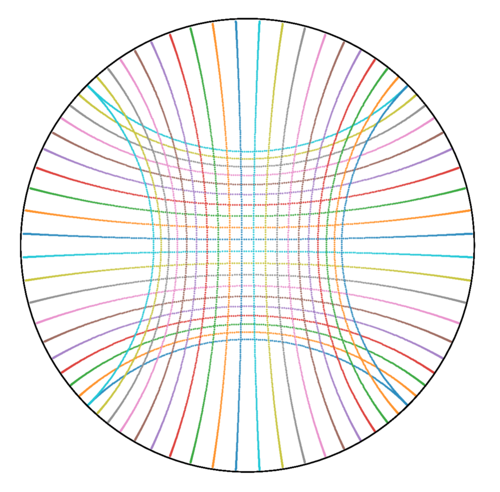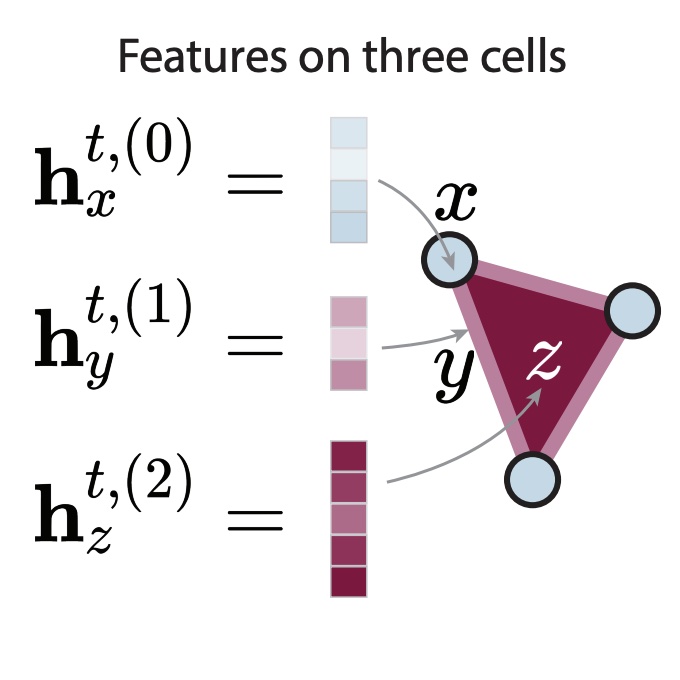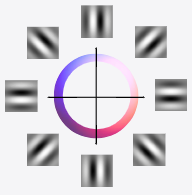
Geodesics in the hyperbolic plane, forming the logo of our open-source software for geometric statistics and geometric (deep) learning: Geomstats.
Geometric Machine Learning
Data spaces with geometric structures arise in many fields in machine learning. From shape spaces equipped with a quotient geometry to neural networks parameterized with orthogonality constraints, researchers are poised to compute with geometric objects.
Our research supports geometric modeling in machine learning by developing new methods and an open-source software - Geomstats.
Paper Spotlight:
Nina Miolane, et al. "Geomstats: a Python package for Riemannian geometry in machine learning." The Journal of Machine Learning Research 21.1 (2020): 9203-9211.

Features supported on three cells x, y, z of a simplicial complex at layer t of a topological neural network.
Topological Deep Learning
The natural world is full of complex systems characterized by intricate relations between their components: from social interactions between individuals in a social network to interactions between neurons in a neural networks. Topological Deep Learning (TDL) provides a comprehensive framework to process and extract knowledge from data associated with these systems.
Paper Spotlight:
Mathilde Papillon, Sophia Sanborn, Mustafa Hajij, and Nina Miolane. "Architectures of Topological Deep Learning: A Survey of Topological Neural Networks." (2023)

Group of 2D rotations acting on an image representing a Gabor filter.
Equivariant Deep Learning
Many of the transformations that occur in images are due to the actions of groups: groups of translations, rotations, scalings, among others. Group-equivariant neural networks are special types of neural networks that preserve the structure of these transformations. We say that they respect the symmetries of the data.
Paper Spotlight:
Sophia Sanborn, and Nina Miolane. "A General Framework for Robust G-Invariance in G-Equivariant Networks". Conference and Workshop on Neural Information Processing Systems (NeurIPS).